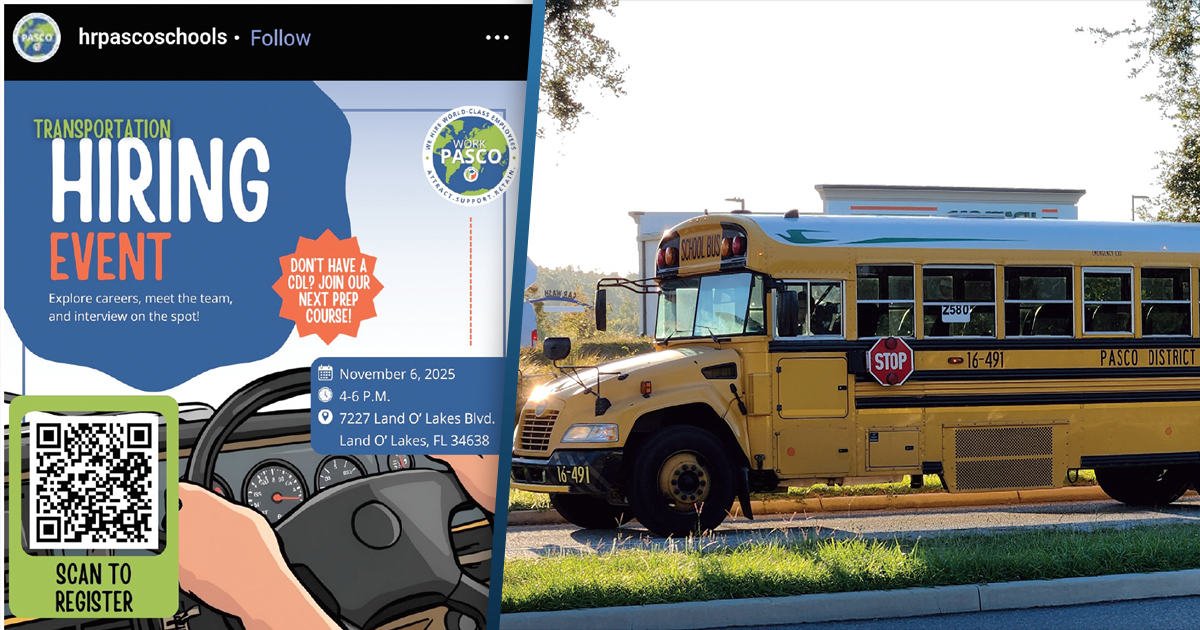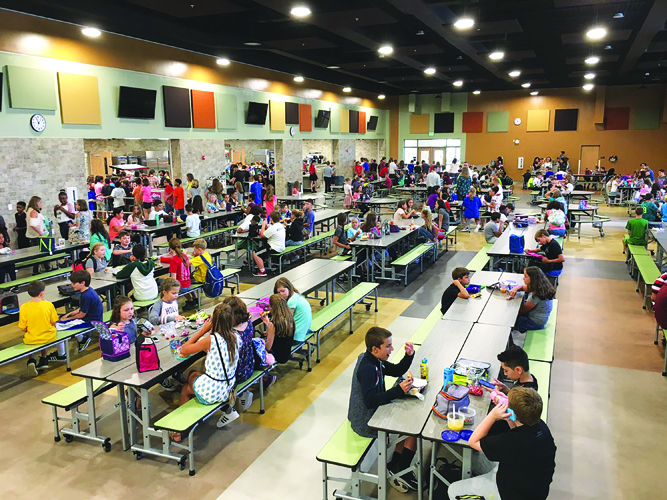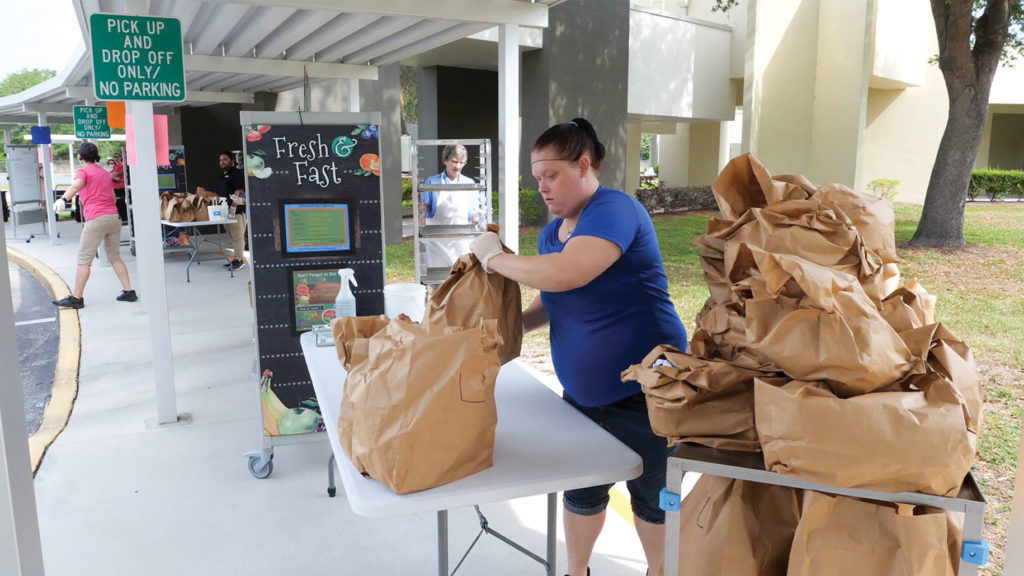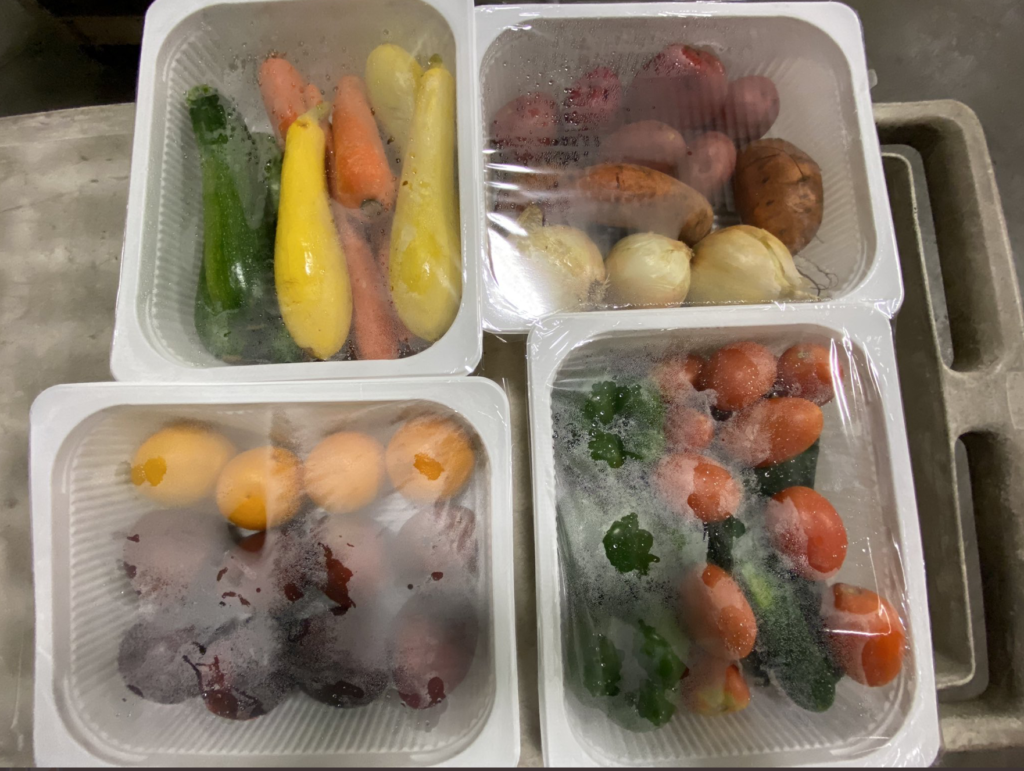Parents Frustrated With Delays While The District Is ‘Desperate For Warm Bodies’ To Fill Bus Driver Vacancies
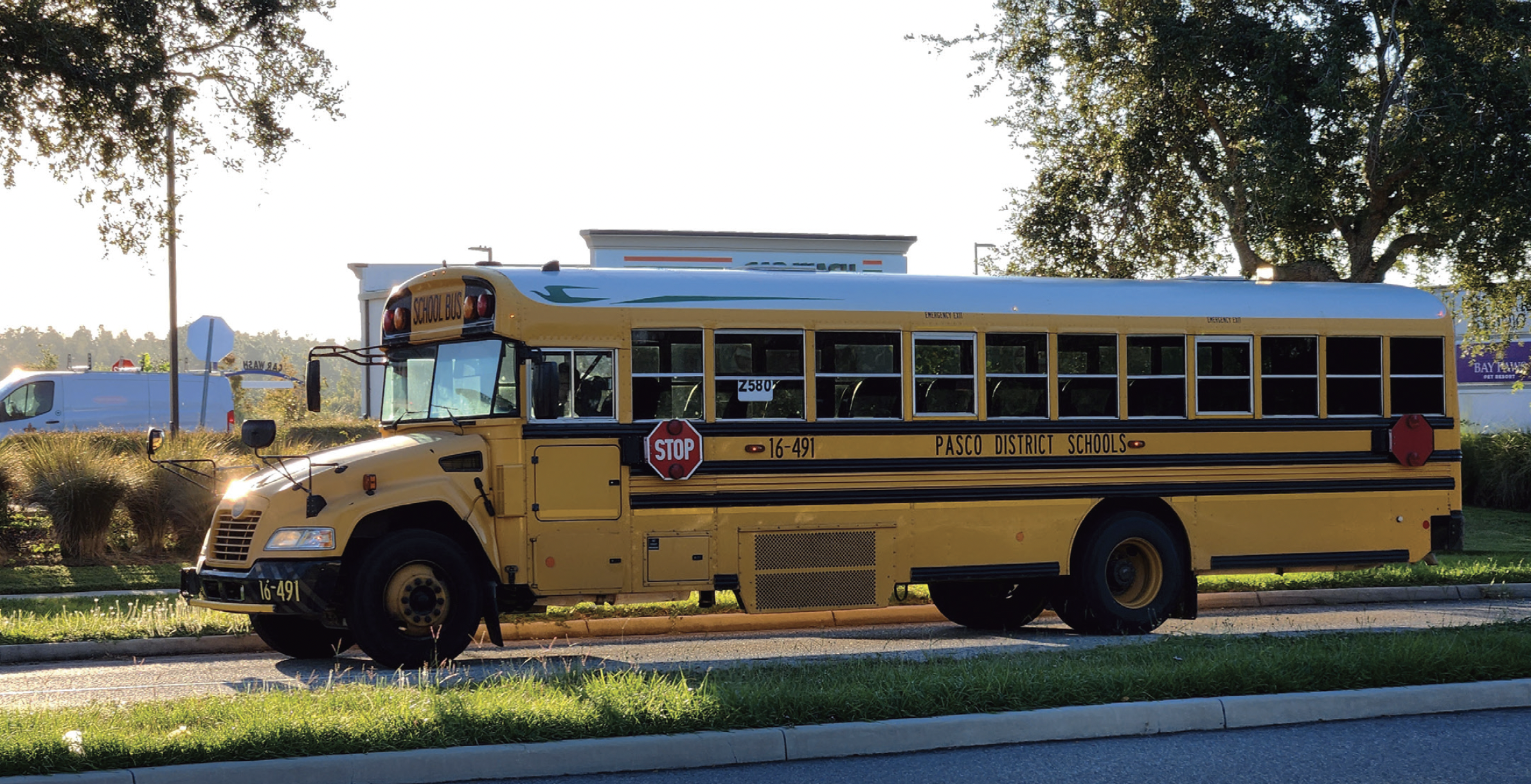
If your child rides a school bus to and from school, they may be arriving to school well after the late bell, and you may not even know. Or, you may be like many other parents who are aware of the issues with late buses — picking up late in the morning, dropping off late at school, or being dropped off late in the afternoon when coming home — and feel like there isn’t much that can be done about it.
We have spoken with Pasco County School District officials, concerned parents and current and former students, and reviewed online community posts — including some posts directly from the bus drivers themselves — and even observed the buses ourselves. All of this has opened our eyes to some significant issues with Pasco County Schools’ Transportation Services for the schools located in Wesley Chapel.
But, we also have found that all of this is a symptom of a much bigger problem — one the District is aware of and actually acknowledges.
Pasco Schools public information officer Jessica Meek says, “Our district continues to feel the impact of the ongoing bus driver shortage, and we are constantly taking steps to address this nationwide challenge….we have a strong and ongoing focus on reducing transportation delays and ensuring our routes run as efficiently as possible.”
So, just how short of drivers is the District? How many additional drivers are needed District-wide? School District officials say that shortfall number is 59. That’s a pretty significant shortage — almost exactly 20% — considering the total number of operational (running) buses in the fleet is 297, with the District stating that, “[There’s] no shortage of vehicles, just drivers.”
But, just how bad is it exactly? One local driver of nearly 25 years (whose employment we verified but decided not to name them for this article) put a comment out on social media last month stating that there was, “..desperation for warm bodies…” regarding the District’s ongoing efforts to recruit and retain drivers. The driver also implied that not all drivers they currently have may be best suited for the job, or compatible with the kids they’re driving around.
One local Wesley Chapel parent, Dr. Lorraine Tracey, says she has been feeling the effects of driver shortages on a nearly daily basis. In regards to the late buses, she believes, “It really is a problem, with no solutions in the works, except trying the same thing over and over, and making no progress.”
Lorraine works a full-time career in clinical development, for the treatment of life-threatening diseases, and has a son and a daughter who attend two different local schools — one who is at John Long Middle School and the other who attends Wiregrass Ranch High. Both ride the bus.
She forwarded to us all of the emails between her and the School District. Like many local parents, Lorraine is frustrated with the situation. “It feels like no matter what I do, or what I say, I’m just banging my head against a wall.”
How The 2025-26 School Year Started
Transportation problems are typically worse at the beginning of the school year for everyone, and that’s because the District’s Transportation Services Department faces the Herculean task of coordinating the logistics to get 33,000 students (the latest total number of student bus riders, according to the School District) across Pasco’s 868 square miles, with buses originating from six different bus compounds.
And, just like the rest of us, buses have to deal with traffic, especially the traffic getting into and out of the schools themselves.
Lorraine believes that many of the school bus drivers were being set up to fail early on by being given impossible routes. She looked at the number of stops, how far apart they were, and where they had to come from, in order to be on time to her son’s stop — and told us that, “unless the bus driver figured out how to fly the bus, they were never going to be on time.”
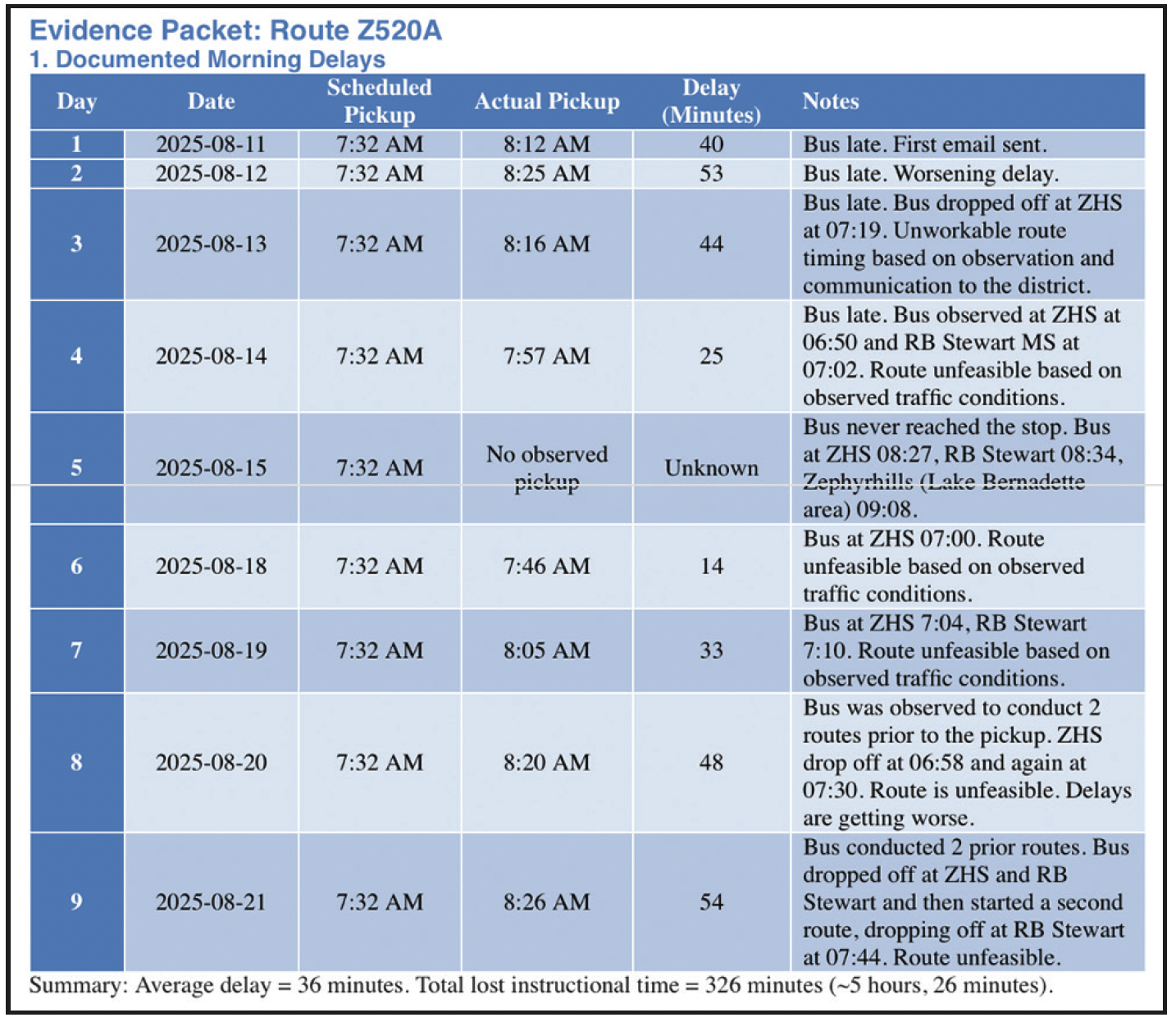
She said that it’s ironic, because at the beginning of the school year, a message was sent out to all parents from Pasco’s Superintendent of Schools Dr. John Legg that stated, in part, “Every minute of instructional time matters.” Lorraine feels that due to the busing issues, the School District and School Board members are not living up to their promises to the students, and she sent detailed emails to all of them explaining that.
Those emails from the beginning of this school year stated that her son’s bus (Route Z520A) was consistently late showing up to his stop, often running as much as an hour (or possibly more) behind. She even compiled a chart (right) to document the delays.
And, Lorraine wasn’t alone either. Numerous local community Facebook groups were ripe with posts about parents having to take their kids to school because buses were getting to stops extremely late — 30 minutes, 40 minutes, an hour even…which has been going on for many years, from what we could find.
Michael Santus, the manager of Transportation Services for Pasco Schools, replied to Lorraine’s email with this boilerplate response:
“As ridership patterns stabilize, route timing naturally adjusts. For example, during the first two weeks of school, buses stop at every designated location. After this initial period, stops without riders are removed to streamline the route. This is one of the many ways our routing team works to enhance overall efficiency.”
A later email he sent specifically about Lorraine’s son’s bus stated, “It appears that ridership is beginning to stabilize. The bus arrived at the stop at 8:09 am this morning and arrived at school at 8:17 a.m. While it was still late, it is 7 minutes late vs. 25 minutes yesterday and 39 minutes the day prior. I will continue to monitor its progress for you.”
Lorraine told us, “What made it worse was that I had to frequently call the school and fill out an ‘absent’ form each day for two weeks, until the school figured out some solution, because his tardiness was causing him to not show up at attendance.”
While she acknowledges that there has been some improvement since the beginning of the year, in regards to the recurring late pick-ups (she says her son’s bus does show up to the morning stop on time now), but that there are still issues with the frequent late drop-offs at Wiregrass Ranch High, and that those haven’t improved, even at this point, two full months into the 2025- 26 school year.
She worries that this is having a negative impact on education. “His first period is Spanish 3 Honors,” she says. “It’s an important class, and he can’t really make up that time.”
Dealing with all of the issues with her son’s bus, Lorraine was surprised, on the morning of Sept. 19, when she got a text from her daughter stating that her bus for John Long hadn’t shown up, and she didn’t know what to do. Lorraine wasn’t available, and neither was a close family friend who lived nearby. An older sibling of a fellow John Long student that Lorraine didn’t know offered to drive the students to the school, and she accepted, since there wasn’t much other choice.
According to the District’s response, when we independently confirmed the record of this incident, they explained that the bus did get there that morning, but it was well over an hour after it was supposed to arrive. Officials further explained that, “There should be no circumstances where a bus does not show up, just delayed.” No explanation was offered as to why the bus was that late.
When hearing of the District’s official response, Lorraine responded to us, “Yep, let’s leave middle schoolers on the side of the road for [more than] an hour.”
The Students’ Perspective
Our initial research quickly uncovered that this was likely a much bigger, District-wide, systemic problem, where if it affected one family this much, there were likely many more families affected in exactly the same way.
We wanted to understand what this looked like inside the school — get an idea of how many buses and kids were coming in late — so we separately interviewed a current and a former student of Wiregrass Ranch High, both of whom asked not to be named.
The current student (a freshman) said that in their first period class, “4 to 5 students per day are late, getting to class at least 5 minutes, and up to 15 minutes [after the bell].” They explained that the majority are “tardies” caused by the buses.
Meanwhile, the former student said that last year, during their first period class (when they were a freshman), there were “8 to 9 per day, mostly due to the bus, who came in 10 to 20 minutes [after the bell].”
They further explained that, “They would hand you [the late students] a tardy slip as you got off the bus to give to the teacher. This had become a normal thing, so much so that the school needed to start doing them in different colors each day, …green, pink, orange, purple, so as not to be reused by the students.”
Our response to all of this info? “Wow.”
Even though neither of these students is riding the bus this year — which would have given them an even more accurate idea of the tardies — because these two students were always in class before the late bell rang, they said it was such a common problem, almost every student knows how bad it is, whether they are bus riders or not.
We followed up and asked the Transportation Services officials specifically: “How many tardies (roughly) of your students are a direct result of busing issues? This could be a number, a general range or even an estimated percentage.”
They apologized and stated that it would take too long to pull and compile that data before our story deadline, but that it is publicly available data for anyone who wants it by filling out a “Public Records Request Form” on the School District’s website.
However, the officials did also verify the need to have staff manage bulk late student arrivals, responding: “There have been some small revisions to accommodate for student supervision (in other words, modifying duty schedules)” when we asked if the individual schools had to make direct adjustments to their operations to compensate for busing issues.
What We Discovered First-Hand
With the students explaining to us how many of their peers were late daily to first period, we decided that we had to see first-hand for ourselves what that translated to, in terms of the buses.
We found that most buses do get to the schools with plenty of time to spare, arriving anywhere between 10 to 20 minutes before the late bell. But, the number of late buses was surprising, at least at the two schools we chose to look into — John Long Middle and Wiregrass Ranch High.
We picked a random Thursday this month — Oct. 16 — to go out and directly observe the buses entering the school properties (from the adjacent public right-of-way). We saw multiple buses arriving to the school properties after the late bell had already rang.
For each one we observed, we wrote down the bus number and the time they crossed onto the property. We then sent those bus numbers to the District, to ask them what time their records showed that those buses arrived. They confirmed down to within 1 minute of accuracy that our observations were consistent with their records.
We found that two buses arrived late to John Long and at least three buses full of students (there was one discrepancy with a fourth) arrived late to Wiregrass Ranch.
When we asked if there are any proactive steps the schools are taking to make the bus drop-off and pick-ups smoother or less time-consuming, the District officials told us that, “All administrators look at the systems they have in place each year to ensure it is the most efficient procedure for their campuses.”
Knowing the Wiregrass Ranch campus is especially overcapacity (with 2,183 students enrolled this year, it is at 140% of its capacity), we asked if this would cause any efficiency issues with busing.
The District replied that, “The routes get reevaluated each year, to accommodate for student growth. The issues with busing are a direct result of bus driver shortages, not capacity issues.”
We did observe one clever trick that the buses going to the middle school were doing to avoid traffic and save time — one that was perfectly safe and legal (for the buses), but that we aren’t going to explain, so other drivers don’t try to replicate it — but it was a very unique “route” that shows they are trying to be ingenious in at least one way to save time.
There have been some other improvements, too. At least one Pasco parent that we reached out to, who also had significant complaints about busing last year, stating that her son was often arriving back home more than two hours after school ended. That parent told us that, “It’s a lot better this year,” when asked for a comment.
The ‘Wheres The Bus?’ App
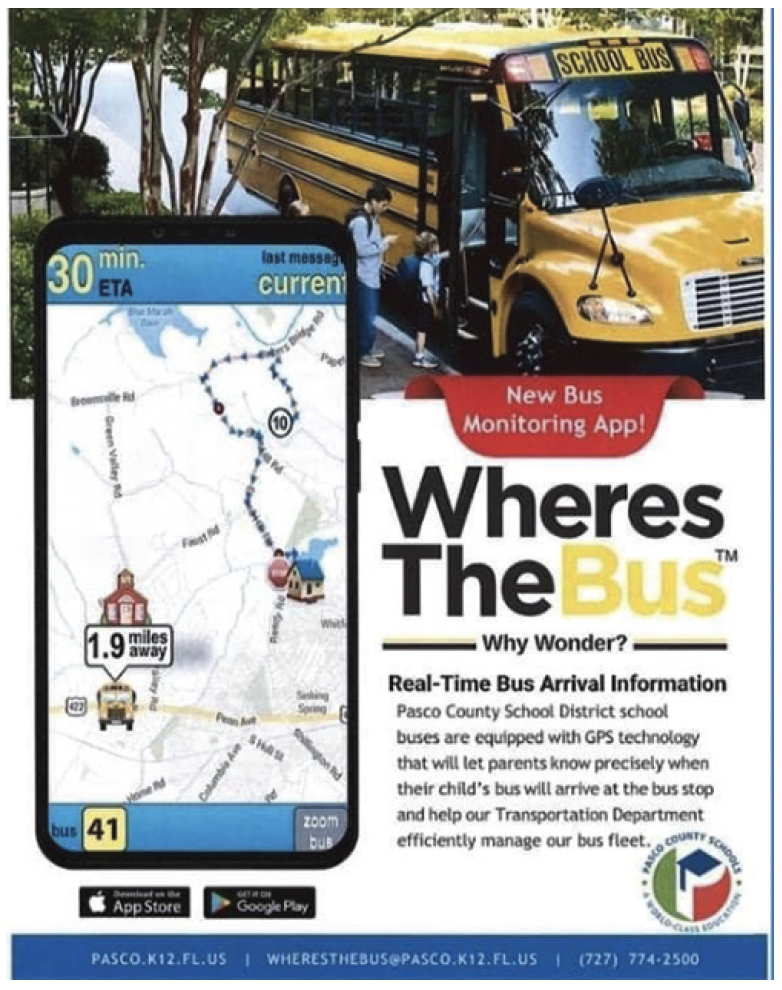
A relatively new GPS-enabled bus tracking system, a phone app fittingly called (and misspelled) “Wheres the Bus?” (left) at least allows parents to see exactly where the school bus is on a map, and actively track it. This app was launched in 2023 for Pasco and is available for parents to download from Google Play or the Apple App Store — but there may be an issue with it.
We asked the District, when a bus is arriving late to a school, and drops off students past the late bell time, does the “Wheres the Bus?” app notify parents of the late drop off, or are parents notified any other way of the late drop off?
They responded, “If a parent is using the parent app, and their child signs in and out [when getting on and off the bus] they can track this specific information, but there is not a separate notification. However, parents should be getting notifications through MyStudent if a bus is going to be late picking up or dropping off their child.”
Lorraine stated that while she does get notifications on her phone about late morning pickups, it’s not always that accurate, saying that the times shown might be a little off, but she explained that as far as tracking the times when her son gets on and off the bus (to verify his late arrival to the school), when she goes into the app, it only shows the times for that day, which resets the following day, and she hasn’t been able to find the historic data anywhere in the app.
This means that some parents may not even know that their children are arriving late to school, unless their child tells them, or they actively go into the app to view the live map showing the location of the bus, or review the pick-up and drop-off times for that day themselves, on that specific day.
The Desperate Need For Drivers
Lorraine told us that she felt slightly insulted when she was emailing the District about her serious concerns, because in a response she received from Nichole Schreiber, a field service specialist with the District’s Transportation Services Dept., Schreiber said, “If you know anyone who would like to join the transportation staff, we would greatly appreciate it!”
In other words, Lorraine says, instead of the District coming up with solutions, “It shifts the burden to parents by suggesting that we need to help recruit staff, which is neither our responsibility nor a practical solution to ensuring timely and reliable transportation in the immediate term.”
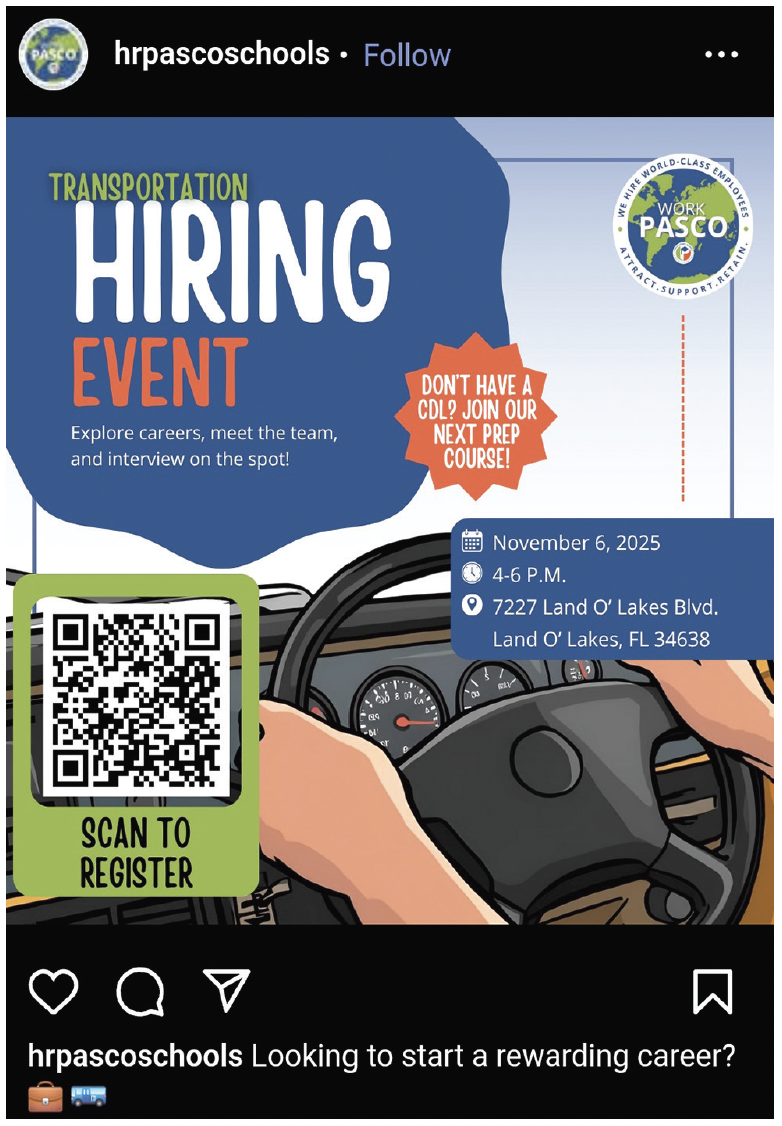
She also joked with us that they must be really desperate if they want her to drive a bus.
But, District officials admit that the ARE desperately trying to recruit help, almost any way they can, and they’re definitely not shy about it. But, are these efforts to the potential detriment OR enhancement of public safety and service?
Back in 2021, Pasco’s former Superintendent of Schools Kurt Browning’s staff suggested using the National Guard to help with the bus driver shortage. It was ultimately turned down because there was no formally declared state of emergency.
The District has organized multiple hiring events, some upcoming, to try to recruit drivers. The next one will be on Thursday, November 6, 4 p.m.-6 p.m., at the District Office (7227 Land O’Lakes Blvd., Land O’ Lakes, FL 34638).
Pasco Schools Transportation Services advertises the benefits they offer to drivers as:
• Free health insurance
• Paid time off
• Paid holidays
• Retirement plans
• Paid CDL (commercial drivers license)
prep course
• $18.15/hour starting pay
The website says that the District guarantees at least 6 hours of work per day in a split shift, but that most routes are longer than 6 hours.
The Pasco Schools Transportation Services Dept. can be reached during business hours Monday-Friday at (813) 320-2562 to take your questions, comments and/or complaints.

